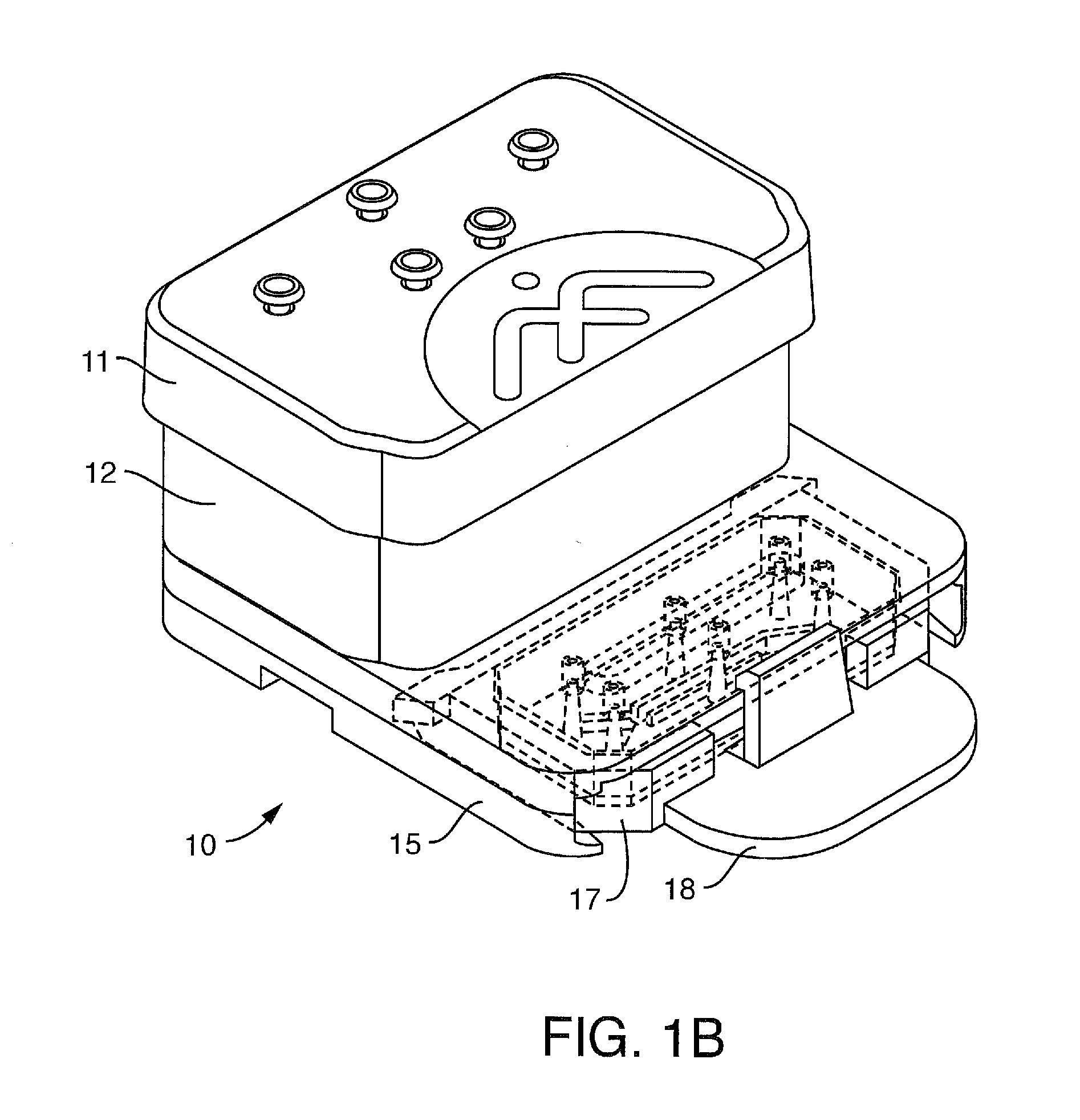Controlling pressure
a technology of controlling pressure and pressure, applied in the field of controlling pressure, can solve the problems of difficult fluid handling, inability to accurately recapture the structure, function, physiology of living tissues in vivo, and often questionable physiological relevance of in vitro data to in vivo systems
- Summary
- Abstract
- Description
- Claims
- Application Information
AI Technical Summary
Benefits of technology
Problems solved by technology
Method used
Image
Examples
example 1
[0242]Conditions for bonding the capping layer (FIG. 2A-2E-2, element 13) to the backplane (14) were examined. Extruded SEBS sheets were bonded to a hot embossed plate. The SEBS sheets were designed to act as the capping layer to the channels that are formed in the COP via the hot embossing process and as a fluid and gas gasketing to mating parts. The testing showed that the 1 mm thick SEBS was better as a fluid seal between the reservoirs and the backplane. The hot embossed plates were fabricated from Zeonor 1420R. The SEBS materials used were:
[0243]A. Thickness: 1 mm, Material: Kraton G1643, Mfg Process: extrusion
[0244]B. Thickness: 0.2 mm, Material: Kraton G1643+5% Polypropylene, Mfg Process: extrusion
An oven process was used in comparison to a laminator. The laminator produced marginal to not adequate bonding. However, the oven process revealed the following:
Material Thickness0.2 mm SEBS1 mm SEBSBonding Temp (C.)8080Bonding Time1 hr-24 hrClamping PressureNone0.5 kgApplied throug...
example 2
[0246]In this example, one embodiment of a protocol for chip activation is discussed. The example assumes that all work is done under a hood using aseptic techniques and all working spaces are sterile (or made sterile).
[0247]Part I: Preparing the Chip
A. Spray the exterior of the chip package with 70% Ethanol and wipe it prior to bring it inside hood.
B. Open package inside hood and take chip in chip carrier out (keep these together).
C. Place chip in chip carrier within large sterile dish
i. Only handle the chip carriers by their wings. Always use tweezer to handle chip, The surface of chip is connected with cell culture area. Avoid touching the surface of the chip with hands and keep the chip unit flat
D. Allow vial of Emulate Reagent 1 (ER1) powder (containing a cross-linker) to fully equilibrate to ambient temperature before opening to prevent condensation inside the storage container—ER1 is moisture and light sensitive
E. Turn the light in the biosafety hood off
F. Reconstitute the po...
example 3
[0250]This example provides one embodiment of a protocol for seeding cells inside the chip in the top channel (which is oriented horizontally, unless otherwise indicated). The example assumes aseptic techniques and a sterile environment.
[0251]It should be noted that, although some cells require very specific seeding conditions, in general an optimal seeding density is achieved when the cells are in a planar monolayer spaced closely. From this spacing, most primary cells will attach and spread into a confluent monolayer. Reference is made below to “gravity washing.” This involves a) placing a (bolus) drop of media (100 uL) over a port on one side of the channel, making sure not to introduce any air bubbles within the port itself, and b) allowing this to flow through the chip, constantly aspirating media excess from the outlet port.
A. Transfer the chips into the hood
B. Place them inside of a sterile dish (eg 15 mm culture dish)
C. Gently wash chips
i. Pipette up 200 ul of cell culture m...
PUM
| Property | Measurement | Unit |
|---|---|---|
| average gas pressure | aaaaa | aaaaa |
| pressure | aaaaa | aaaaa |
| contact angles | aaaaa | aaaaa |
Abstract
Description
Claims
Application Information
 Login to View More
Login to View More - R&D
- Intellectual Property
- Life Sciences
- Materials
- Tech Scout
- Unparalleled Data Quality
- Higher Quality Content
- 60% Fewer Hallucinations
Browse by: Latest US Patents, China's latest patents, Technical Efficacy Thesaurus, Application Domain, Technology Topic, Popular Technical Reports.
© 2025 PatSnap. All rights reserved.Legal|Privacy policy|Modern Slavery Act Transparency Statement|Sitemap|About US| Contact US: help@patsnap.com



